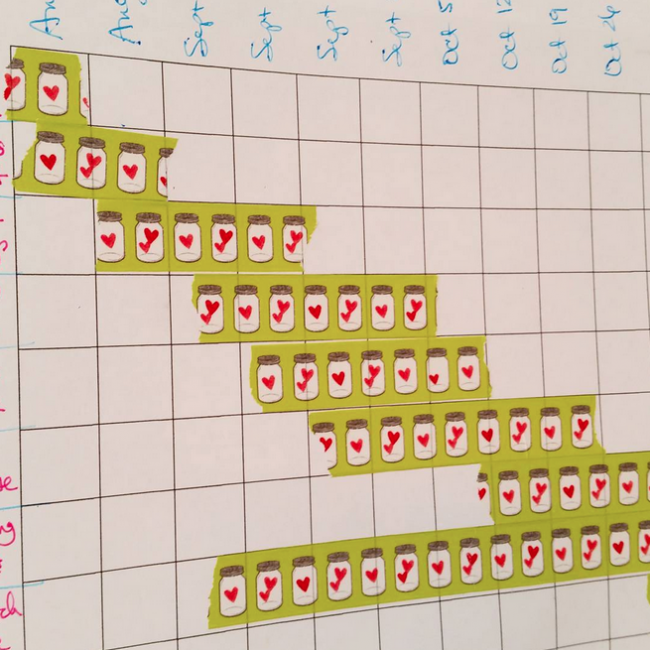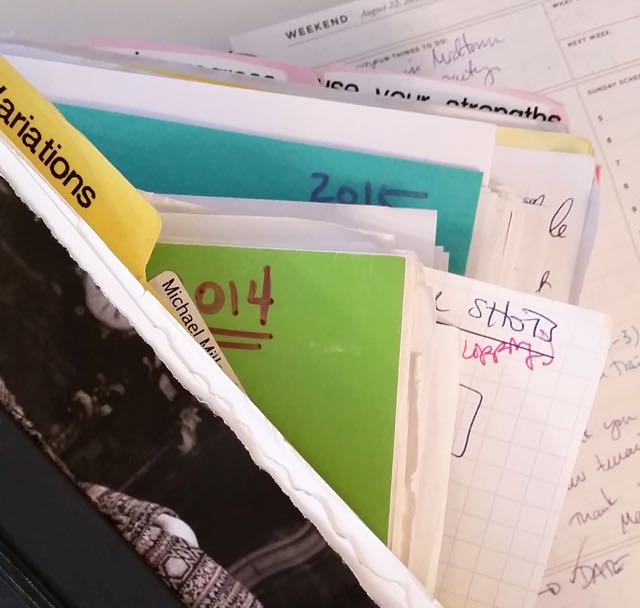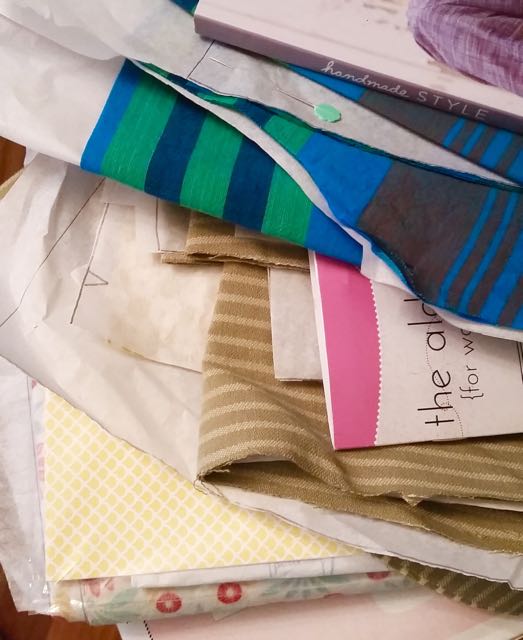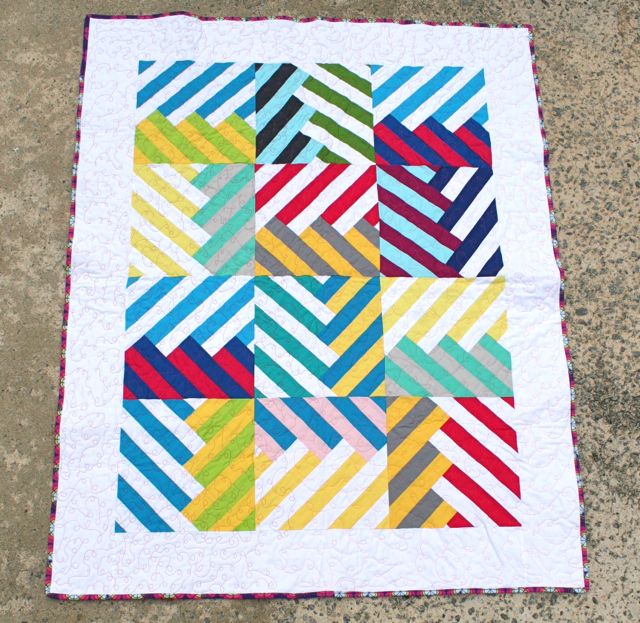
I love the planning part of sewing. Love, love, love it. Choosing the pattern, seeking out the perfect fabric–or finding a fabric, and tracking down the perfect pattern–is the STUFF. I always have eyes bigger than my stomach, and tend to make piles and PILES of folded, prewashed fabrics stacked with the pattern I’d like to pair them with.
The problem is in the execution. The planning is fun because it doesn’t require any ACTION. But as Henry Ford famously said, “You can’t build a reputation on what you are GOING to do.” At some point, all those projects have got to get sewn up.

I am a hard-core, long-term list maker. Generally, I make lists of each pattern/project pairing and a target date for when I’d like it completed. The problem comes in when I have other projects going on at the same time–say, I’m making a dress with a cross stitched bodice, and the cross stitching will take a long time. I should really be working on the cross stitch in the “background,” in between sewing other shorter-term projects, and then assembling the final dress when the cross stitch is done.

Over the years, I’ve tried a number of different techniques for how to ballpark how to layer these multiple projects so that I can get them done in a reasonable amount of time. This is a HUGE step forward from my old system, where I would stack up all the cut-out pieces for an absurd number of projects and assume I’d work through them one at a time, down the stack, until they were all done–I literally still have cut out dresses from FOURTEEN YEARS AGO because that particular approach was so useless.
I like the idea of using a calendar, but some projects, like planning an online class or preparing a pattern for release, require a huge number of stages and take longer than a single month to complete. Since they’re so big, I’d prefer to split them up and work on more than one project at a time, sort of like the Young House Love folks used to do.

I still make piles of cut out projects, but now I’m making a chart and setting not just goals for when they’ll be complete, but dates when they ought to be STARTED in order to get them done. I’m finding that planning this way makes a very simple, visual guide to keep me on track–and a great reminder when I’m not doing anything that I have goals and would like to meet them. This chart is a simple .doc table, sized just right for washi tape, that allows me to list each project and plan out how long they’ll take, then count backward from my target date when I’d like to be done, and estimate when I’ll need to begin in order to meet that goal. Right now, it’s giving me a welcome visual picture of when I’m biting off more than I can chew, when I need to push back my goal dates, and which projects will need to cook in the background while other, smaller projects are being completed. And while I still have a pile of cut-out projects waiting (see image above), they’re vastly more likely to be sewn up now.
What about you? I’m always evolving, looking for ways to become more efficient and apply more logic to meeting goals–while still enjoying the process and not making it a tedious bore. How do you balance ALL THE PROJECTS we all seem to want to do with the realities of your schedule, and your own limits? Share with me in the comments!
P.S. If you’d like to create a similar chart for your own sewing projects, download my version here. It includes 10 rows, for 10 different projects, and 15 columns, for up to 15 days/weeks/months as you plan. Nothing is labeled, so adapt to your own needs–and share how you use it! Each row and column is perfectly sized for a roll of washi tape, so you can map out longer projects that extend across your calendar.



Sabrina B.
August 27, 2015 at 8:50 amWhat a great idea! I read once that people are really good at estimating how much money they will have at a future date, but are really bad at estimating how much time they will have. It seems that this approach would really help with that.
Deborah
August 27, 2015 at 9:07 amI always, always think I can get more done than I really accomplish–because kids, and life, and stuff. But when I was teaching school, I was able to use my planner really efficiently to gauge how much my students could do in a day, so I figured, why not apply that to sewing? So far, so good! I’d love to hear if something similar works for you, or if you’ve got a totally different approach that will help all of us get more sewing done without years of WIPs lying around!!
Cherie
August 27, 2015 at 11:24 amAs usual you have the greatest ideas! I have quite a few projects that I want to start and finish. Some have been started but have been put aside. Thank you for the downloadable chart. You know that I am going to be using it. Especially with fall coming, I am eager to get some sewing done!
Deborah
August 27, 2015 at 11:32 amIt’s that cooler weather, right?? And something about fall makes me want to have FINISHED projects. Knowing when to start seems like a good help–and I’m so much more motivated to stick to it when I can see it all laid out and how much I will have to enjoy when it’s accomplished! Can’t wait to hear how you use it–am sure you’ll have suggestions for refining that will make it even more efficient! 🙂